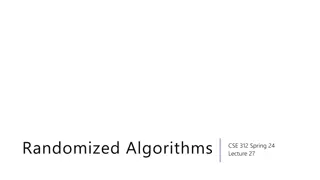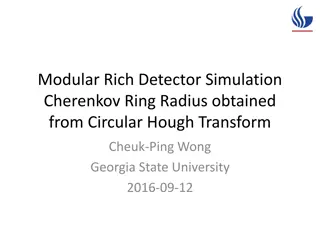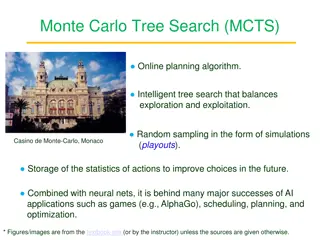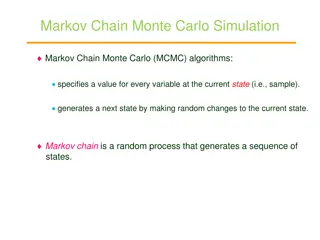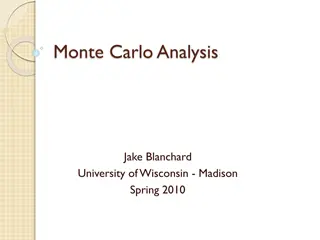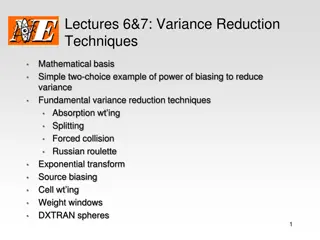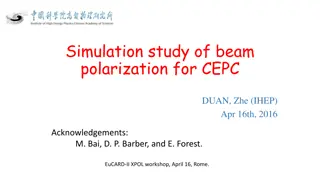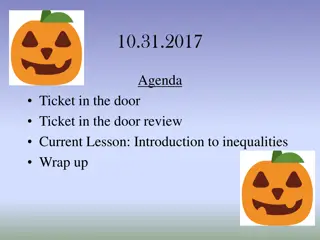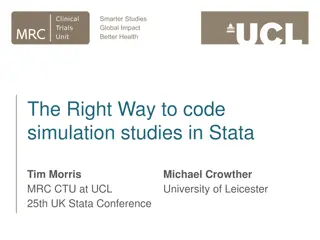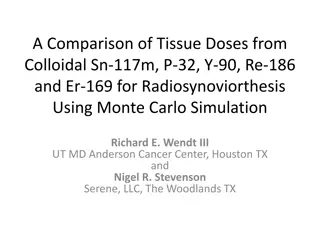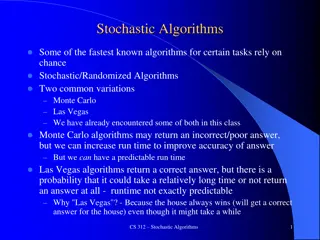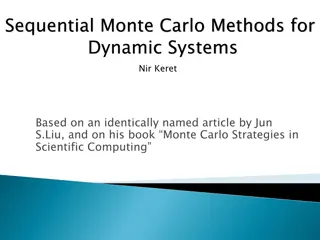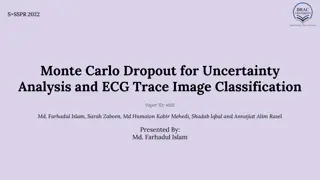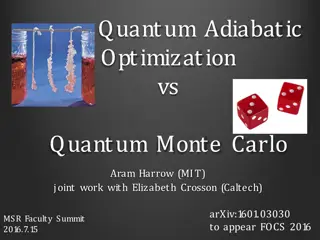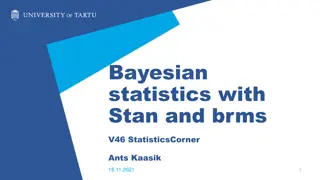Monte Carlo Simulation of Bell Inequalities
In the fascinating world of quantum mechanics, Bell Inequalities challenge our understanding of reality and locality. Explore the historical context from EPR to CHSH, the concept of entangled Bell States, and the significance of Monte Carlo simulations in testing these theoretical frameworks. Discover the intriguing interplay between hidden variables and quantum entanglement, and delve into the mathematical formulations of Maximum Violation Angles. Witness the probabilistic nature of coincidence detection in experimental setups, shedding light on the profound mysteries of quantum physics.
Download Presentation

Please find below an Image/Link to download the presentation.
The content on the website is provided AS IS for your information and personal use only. It may not be sold, licensed, or shared on other websites without obtaining consent from the author.If you encounter any issues during the download, it is possible that the publisher has removed the file from their server.
You are allowed to download the files provided on this website for personal or commercial use, subject to the condition that they are used lawfully. All files are the property of their respective owners.
The content on the website is provided AS IS for your information and personal use only. It may not be sold, licensed, or shared on other websites without obtaining consent from the author.
E N D
Presentation Transcript
Monte Carlo Simulation of Bell Inequalities Justin Willson
EPR Paper (1935) Einstein, Podolsky, and Rosen believed theory of quantum mechanics was incomplete In the paper, they describe a thought experiment about entanglement States cannot be described independently, and if one is measured, the other becomes known instantly Therefore if quantum mechanics is true it violates the principle of locality Believed statistical distributions of hidden variables predetermined this information
Bell and CHSH Paper (1969) In between, Bell derived an inequality that proved quantum mechanics and the principle of locality were incompatible Clauser, Horne, Shimony, and Holt generalized his inequality and described an experiment to test it for the first time
Bell States Entangled photons are created through Spontaneous Parametric Down Conversion Photons pass through a BBO crystal and a small probability split into two photons Type I - resulting photons have the same polarization Type II - resulting photons have orthogonal polarizations
Probability of Coincidence Detection These expressions can be derived in multiple ways, either using density matrix formalism (as in the simulation) or using an inner product The simulation tests these expressions by making a plot of probability vs. beta One angle is kept constant while the other is changed incrementally from 0 to 2*pi
Probability of Coincidence Detection V1 = 0.90764, V2 = 0.71533
Visibility Needed for Violation Linear fit parameters: Visibility needed for violation:
Comparing Quantum and Classical States A purely classical state will never violate the CHSH Inequality In a classical state, for example a mixed state, there is no entanglement This is true even if there are statistically the same number of horizontally polarized or vertically polarized photons as a bell state Only entangled states, and therefore quantum states, violate the inequality Classical states produce a maximum value of S=2 while quantum states have a maximum value of S=2.82
References J.F. Clauser, M.A. Horne, A. Shimony, and R.A. Holt. Proposed Experiment to Test Local Hidden-Variable Theories , Physical Review Letters, Vol. 23, No. 15, 1969, pp. 880-884. A. Einstein, B. Podolsky, and N. Rosen. Can Quantum-Mechanical Description of Reality Really be Considered Complete? , Physical Review, Vol. 47, 1935, pp. 777-780. L.P. Martins, A.J. Almeida, P.S. Andre, and A.N. Pinto. Photon-Pair States and Violation of CHSH Inequality , Microwave and Optical Technology Letters, Vol. 54, No. 11, 2012, pp. 2454-2461. Stony Brook University, Violation of Bell s Inequality Lab Manual, 2016.











